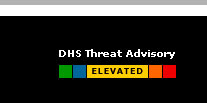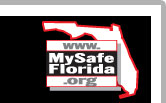




Your Family Disaster Supplies KitDisasters happen anytime and anywhere. And when disaster strikes, you may not have much time to respond. A highway spill of hazardous material could mean instant evacuation. A winter storm could confine your family at home. An earthquake, flood, tornado or any other disaster could cut off basic services - gas, water, electricity and telephones - for days. After a disaster, local officials and relief workers will be on the scene, but they cannot reach everyone immediately. You could get help in hours, or it may take days. Would your family be prepared to cope with the emergency until help arrives? Your family will cope best by preparing for disaster before it strikes. Therefore, you should always be prepared and maintain the proper supplies in case of such emergencies. There are six basics you should stock in your home: water, food, first aid supplies, clothing and bedding, tools, and emergency supplies/special items. Keep the items that you would most likely need during an evacuation in an easy-to-carry container - suggested items are marked with an asterisk (*). Possible containers include a large covered trash container, camping backpack, or a duffle bag. Store your kit in a convenient place known to all family members. Keep a smaller version of the Disaster Supplies Kit in the trunk of your car. Keep items in air tight plastic bags. Change your stored water supply every six months so it stays fresh. Rotate your stored food every six months. Re-think your kit and family needs at least once a year. Replace batteries, update clothes, etc. Ask your physician or pharmacist about storing prescription medications. To prepare your kit, review the checklist provided in the subsequent paragraphs and gather the supplies that are listed. You may need them if your family is confined at home. Place the supplies you'd most likely need for an evacuation in an easy-to-carry container. These supplies are listed with an asterisk (*). Water:Store water in plastic containers such as soft drink bottles. Avoid using containers that will decompose or break, such as milk cartons or glass bottles. A normally active person needs to drink at least two quarts of water each day. Hot environments and intense physical activity can double that amount. Children, nursing mothers and ill people will need more.
Food:Store at least a three-day supply of non-perishable food. Select foods that require no refrigeration, preparation or cooking and little or no water. If you must heat food, pack a can of sterno. Select food items that are compact and lightweight.
First Aid Kit:Assemble a first aid kit for your home and one for each car. A first aid kit*
should include:
Non-prescription drugs:Contact your local American Red Cross chapter to obtain a basic first aid manual. Tools and Supplies:
Clothing and Bedding:*Include at least one complete change of clothing and footwear per person.
Clothing and Bedding:Remember family members with special needs, such as infants and elderly or disabled persons.
|